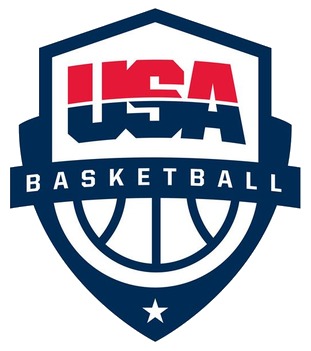Amyotrophic lateral sclerosis (ALS), also known as motor neurone disease (MND) or Lou Gehrig's disease (LGD), is a rare, terminal neurodegenerative disorder characterized by the progressive loss of upper and lower motor neurons, leading to muscle weakness, stiffness, twitching, and wasting. These motor neuron deficits impair speaking, eating, moving, and eventually breathing. A significant portion of ALS patients develop frontotemporal dementia. The disease is classified as either limb-onset or bulbar-onset, depending on the initial symptoms.
1918: Description of Flail leg syndrome
In 1918, Pierre Marie and his student Patrikios first described Flail leg syndrome, a regional variant of ALS.
1933: Motor neurone disease term coined
In 1933, the British neurologist Russell Brain coined the term motor neurone disease to reflect his belief that ALS, progressive bulbar palsy, and progressive muscular atrophy were all different forms of the same disease.
1939: ALS called Lou Gehrig's disease
In 1939, ALS was called Lou Gehrig's disease after the American baseball player Lou Gehrig, who was diagnosed with ALS.
1969: First EMG/NCS diagnostic criteria for ALS published
In 1969, Edward H. Lambert published the first EMG/NCS diagnostic criteria for ALS, consisting of four findings he considered to strongly support the diagnosis.
1994: El Escorial research diagnostic criteria for ALS
The "El Escorial" research diagnostic criteria for ALS were established in 1994.
1998: Revised El Escorial research diagnostic criteria for ALS
In 1998, The "El Escorial" research diagnostic criteria for ALS were revised.
2006: NIV prolongs survival by about 48 days
In 2006, a randomized controlled trial found that non-invasive ventilation (NIV) prolongs survival by about 48 days and improves the quality of life for ALS patients with normal or moderately impaired bulbar function.
2006: Awaji criteria proposed using EMG and NCV tests to help diagnose ALS
In 2006, the "Awaji" criteria proposed using EMG and NCV tests to help diagnose ALS earlier.
August 2014: Ice Bucket Challenge goes viral
In August 2014, the "Ice Bucket Challenge" went viral online to raise money for ALS research, involving participants pouring ice water on themselves and donating to ALS research organizations.
2015: Cohort study suggests NIV may prolong survival in those with bulbar weakness
In 2015, results from a large cohort study suggested that NIV may prolong survival in those with bulbar weakness, indicating NIV should be offered to all people with ALS.
2015: Lowest ALS prevalence in 18-39 age group
In the United States in 2015, the lowest ALS prevalence was in the 18–39 age group, while the highest prevalence was in the 70–79 age group.
2015: Prevalence of ALS in the US in 2015
In the United States in 2015, the number of those with ALS was 5.2 people per 100,000, and was higher in whites, males, and people over 60 years old.
2015: ALS prevalence by race in the United States
In the United States in 2015, the prevalence of ALS in whites was 5.4 people per 100,000, while the prevalence in blacks was 2.3 people per 100,000.
2016: Randomized controlled trial on mexiletine for cramps
A randomized controlled trial in 2016 supported the conclusion that mexiletine is safe and effective for treating cramps in ALS.
2017: Review concludes mexiletine safe and effective for cramps
In 2017, a review concluded that mexiletine is safe and effective for treating cramps in ALS, based on a randomized controlled trial from 2016.
2019: Gold Coast criteria diagnostic criteria for ALS
In 2019, the "Gold Coast" criteria diagnostic criteria for ALS were proposed.
April 2023: FDA approves Tofersen for SOD1-associated ALS
In April 2023, Tofersen (Qalsody), an antisense oligonucleotide, received approval for medical use in the United States for treating SOD1-associated ALS. Studies suggested a potential slowing of disease progression and a significant reduction in neurofilament light chain.
2023: ALS diagnosis based on clinical assessment
In 2023, the diagnosis of ALS is primarily based on a physician's clinical assessment after ruling out other diseases, as there is no single test for definite diagnosis. Many biomarkers are being studied but are not yet in general medical use.
April 2024: Relyvrio withdrawn after Phase 3 trial failure
In April 2024, the manufacturer withdrew Relyvrio (AMX0035) following the Phase 3 PHOENIX trial results that did not show substantial benefit to ALS patients.
2025: Phase II study on tetramethylpyrazine nitrone
In 2025, a phase II study found that tetramethylpyrazine nitrone is safe for patients with ALS, but it did not show a significant advantage over placebo in the primary efficacy measure.
2040: Projected increase in ALS cases worldwide
The number of ALS cases worldwide is projected to increase from 222,801 in 2015 to 376,674 in 2040, an increase of 69% primarily due to the aging of the world's population.
Mentioned in this timeline

Lou Gehrig nicknamed the Iron Horse was a legendary New...

Money serves as a universally accepted medium for exchanging goods...
Trending

2 months ago Millie Bobby Brown's Fashion: Tiny Shorts, Crop Top, Y2K Shoes, and Fur Boots

USA Basketball USAB is the governing body for basketball in the United States and represents the country in FIBA It...

8 months ago Kevin Hart to Host the 2025 BET Awards: A Comedic Takeover!
1 month ago Mega Millions and Pick 3: Lottery Results and Winning Numbers Updates

Michael Mac Jones is a professional football quarterback currently playing for the Jacksonville Jaguars in the NFL He achieved significant...

7 months ago Drew Barrymore spotlights daughters and launches '70s-inspired furniture collection at Walmart.
Popular

Tucker Carlson is an American conservative political commentator known for...

Candace Owens is an American conservative political commentator and author...

XXXTentacion born Jahseh Dwayne Ricardo Onfroy was a controversial yet...

Ben Shapiro is a prominent American conservative political commentator media...

William Franklin Graham III commonly known as Franklin Graham is...

Bill Gates an American businessman and philanthropist revolutionized personal computing...
